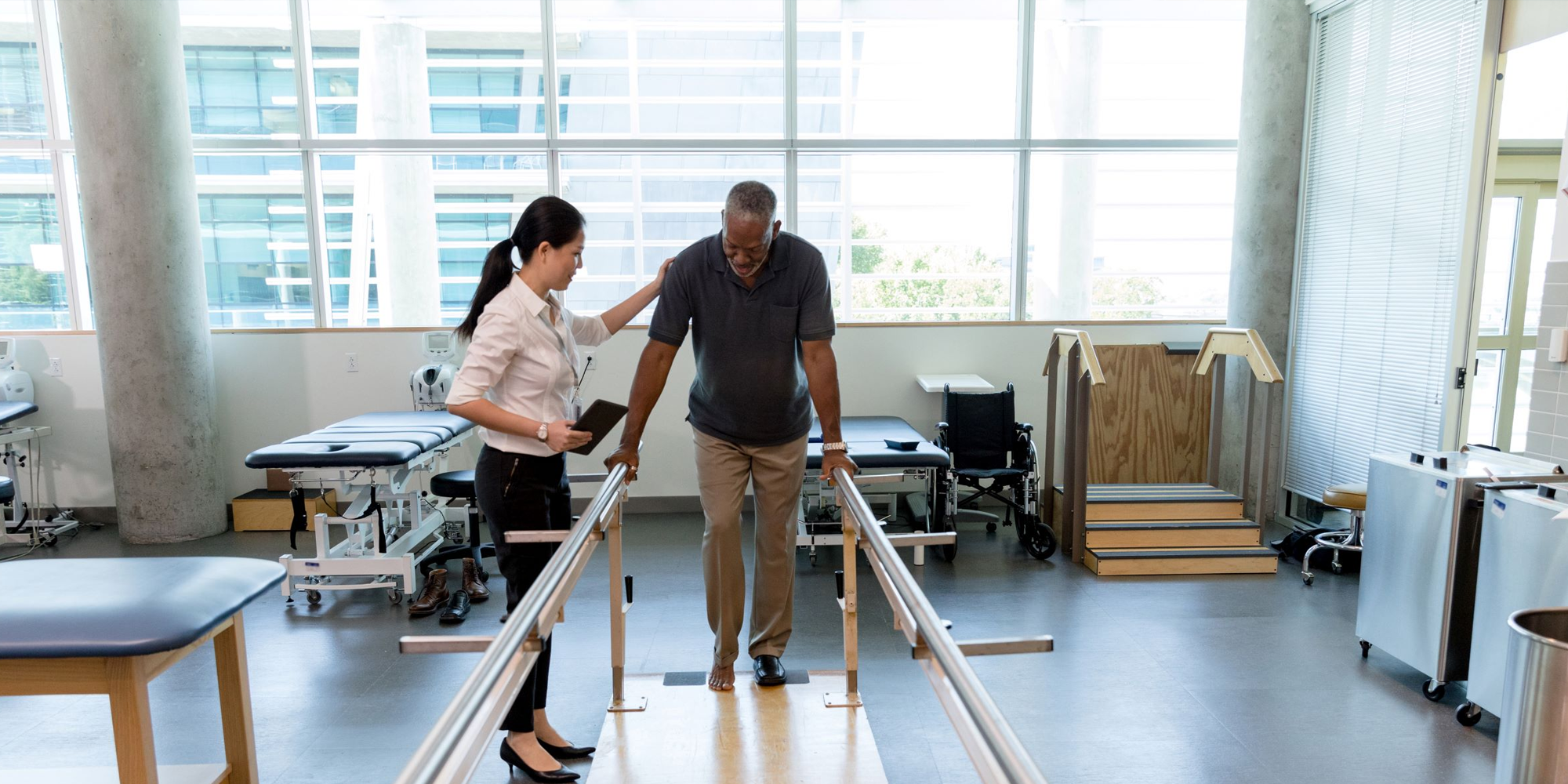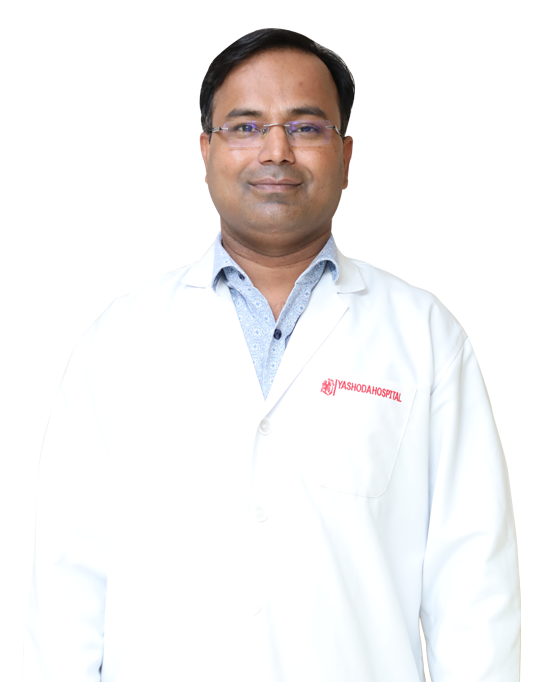
Stroke Therapy Unit at Yashoda Hospital
Yashoda Hospital provides you with the right mixture of care and medical supervision for the therapy of patients suffering from a stroke. The Stroke therapy at Yashoda Hospital is a part of our Centre of Neurosciences and is a specialised unit that offers full prevention, treatment and rehabilitation services for patients with conditions related to the brain.
Our dedicated stroke team follows a multidisciplinary approach and works closely with other departments at the hospital and also provides post-stroke care which is critical for the patients who had recently been attacked.
Our stroke therapy unit plays the best role for further recovery through physiotherapy. Yashoda hospital’s physio for stroke patients program includes range-of-motion therapy, constraint-induced therapy, mobility training, etc. in the aftercare for stroke patients.
Why Choose Yashoda Hospital For Stroke Therapy?
We, at Yashoda hospital, manage the journey of the patient in bridging the gap between hospital and home seamlessly and painlessly. We have provided rehabilitation to post-stroke paralysis patients and supported them in managing their daily activities and get their life back to normal.
We aim to retrain the muscles and nerves of the patients that have sustained an injury after the event. Our “continuum care” model ensures that patients get the necessary treatments from our neuroscience department and also receives the continuity of care post-hospitalization by being in constant contact with their primary doctors.
Advanced Technology
We provide state of the art technologies in different areas of physiotherapy, and thus our hospital has the requisite cutting edge technology to cater to the needs of that particular segment. Our centre provides the following technologies for treatment:
- Manual Therapy
- Electrotherapy
- Ultrasonic
- Kinesio Taping
- Dry Needling
- Class IV Lasers
- Hydrotherapy
- Heat Wave
- Cryotherapy
- Alter G
- Spinal Decompression Therapy
What Is A Stroke?
Strokes (also known as Cerebrovascular condition) are brain attacks that affect the blood vessels of the brain. When the blood supply is obstructed, a stroke occurs. After cancer, stroke is rated as the second-highest cause of death and disability, in non-communicable diseases.
There are usually three types of Strokes:
- Ischemic Stroke: It occurs due to a blood clot that restricts the blood and oxygen from reaching the brain.
- Haemorrhagic Stroke: It occurs when the weakened blood vessel ruptures as aneurysms or arteriovenous malformations (AVMs).
- Transient Ischemic Attacks (TIAs): Also called mini-stroke occurs when blood fails to flow in a different part of the brain. However, it may reduce after a short amount of time.
What are the Treatments for Stroke Patients At Stroke Therapy?
The surgeons at the Centre for neurosciences will treat patients with severe conditions related to Stroke. Treatments include:
- In case of a haemorrhagic stroke, the treatment will depend upon the cause of the stroke. The major types of stroke causes are:
Aneurysm
- Treatment Method: In endovascular coiling, a very thin metal wire is inserted inside the brain aneurysm, through a miniature catheter, by a highly experienced surgeon. This microcatheter is navigated through the web of brain arteries under image guidance in a cath lab. Once the catheter reaches the desired location, a series of handmade coils are placed inside the aneurysm and detached from outside the body. These small coils form a coil mass which blocks the blood flow to the aneurysm and subsequently lead to the healing of the artery.
Arteriovenous Malformation (AVM)
- Treatment Method: An Arteriovenous Malformation (AVM) occurs within the brain itself when there is an abnormal collection of blood vessels. The blood flows rapidly from the arteries directly into the veins due to a sort of short circuit. This leads to pressure building and bleeding from the AVM or the veins that do not have enough support in their walls. Patients can be asymptomatic or may suffer from seizures, headaches, or deterioration of neurologic functions. If haemorrhage occurs, patients may experience stroke-like symptoms, severe headaches, or even loss of consciousness. The treatment of AVMs may include surgical excision, radiation treatment, or embolization. In most cases, embolization is used to block the blood supply to the AVMs, making the treatment safe. In 70% of the cases, embolization may fully treat a lesion. In some cases, patients might have to undergo a surgical resection or radiation therapy to complete the treatment.
Carotid Disease (Stenosis)
- Treatment Method: In recent years, the use of Angioplasty and Stenting for the treatment of cerebrovascular diseases has grown immensely. Patients with more than 70% symptomatic carotid stenosis are the ones who greatly benefit from this intervention procedure. Patients may also have a history of a previous stroke or Transient Ischemic Attacks (TIAs). This procedure is performed under monitored anaesthetic care with the patient sedated or under general anaesthesia, depending on their medical condition, making it a highly personalized treatment.
Tumour Embolization
There are several groups of patients in whom bleeding from a tumour needs to be controlled. Pre-operative treatment of the neck masses or skull base lesions (meningiomas) are performed to decrease the time and risk of surgery. Patients with epistaxis, i.e. persistent severe nose bleeding, may also benefit from tumour embolization
All the above procedures are called Neuro-intervention procedures and are done in a Neurovascular Cath Lab.
What Stroke Rehabilitation Therapy Do We Provide?
There are incidences of serious stroke-related, long-term disabilities rising every year. Our doctor’s focuses on identifying strokes as early as possible and all attempts are made to open clogged arteries to prevent the loss of brain neurons.
The earlier the endovascular treatment is performed, the better the outcome. This is done by using a clot-removing device, which traps and removes a clot from the artery of the brain in a cath lab. The functional outcomes of this procedure are significantly better as compared to traditional treatments of stroke.
We provide constant monitoring and optimised treatment for recovery when it comes to post-stroke care. The post-stroke facility involves speech therapy, physical therapy, and occupational therapy. Our multidisciplinary stroke rehabilitation team includes neuro therapists, doctors, therapists for speech and language training and counsellors to help in relieving psychosocial problems, etc.
Make an Appointment
We are eager to help you at every step of your medical journey from hospital and back to your home.
For Appointment
+91 - 9810922042
For Any Query
0120 – 4182000
Meet Our Doctors


